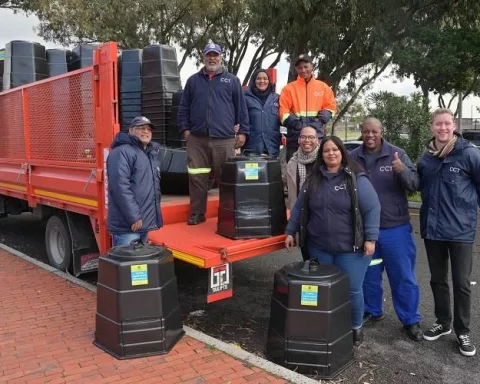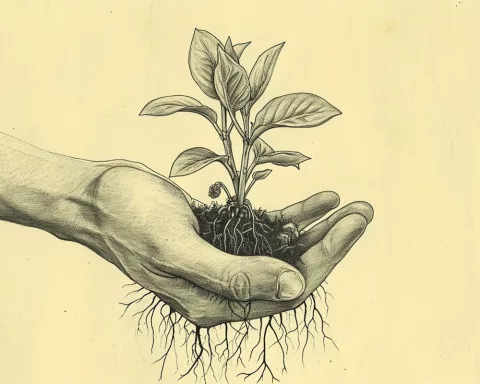Recently, Plettenberg Bay in South Africa had an unusual spectacle on its serene shore when two yellow-bellied sea snakes, highly venomous creatures with no antivenom available, were marooned on the beach by the tumultuous ocean. While it may be tempting to help, it is best to maintain a safe distance and contact a local expert or stranding network for assistance. However, the local experts were successful in rescuing the sea snakes, and this occurrence presents an opportunity for environmental awareness and appreciation of the interconnectedness of different species in the dynamic world.
Can I Help Marooned Sea Snakes on Plettenberg Bay’s Beaches?
It’s natural to want to assist marooned sea snakes on Plettenberg Bay’s beaches, but it’s best to maintain a safe distance. Yellow-bellied sea snakes are highly venomous, with no antivenom available, and handling them can be extremely dangerous. Instead, contact either the stranding network or a local snake expert for assistance in ensuring both the safety of people and the snakes.
An Unusual Spectacle on a Serene Shore
Plettenberg Bay, nestled in the heart of South Africa, is famed for its azure waters and sprawling sands. But recently, a surprising episode has occurred. The calm beachfront has temporarily become a haven for two exceedingly toxic yellow-bellied sea snakes, displaced by the tumultuous ocean. The tranquil coastline has transformed into a visual display of natural caprice, an intriguing blend of the marvelous and the treacherous.
The yellow-bellied sea snakes are usually found in the tepid tropical currents across the world, making them unaccustomed to the South African shores, particularly the Garden Route coast that extends from Mossel Bay to Storms River. Their existence in Plettenberg Bay displays the immense strength of the ocean, capable of displacing even these elusive beings and casting them into unfamiliar landscapes.
Chanel Hauvette, an experienced marine ranger with CapeNature, clarifies that the stormy waters likely disrupted the warm currents these snakes are used to. The ensuing cold shock likely resulted in the sea snakes being marooned on the Plett beaches. Their solemn black or dark blue-brown topsides and distinctive yellowish undersides are prominent against the sandy backdrop.
Warning Against the Instinctive Impulse to Help
The image of these marooned sea snakes, still and seemingly powerless, could provoke a natural inclination in some beach visitors to assist. However, Lloyd Mostert, a highly-regarded local snake expert, highlights the hazards of handling these alluring creatures. In a recent social media post, Mostert emphasized that even though these snakes appear paralyzed when washed ashore, their condition should not invite individuals to touch them.
As attractive as these creatures may be, they harbor a potent neurotoxin – a deadly venom for which no antivenom presently exists. The danger is significant, thus, the advice is straightforward – maintain a safe distance. Instead of personally attempting a rescue, either the stranding network at Plettenberg Bay or Lloyd Mostert should be contacted to ensure the safety of both people and snakes.
Successful Rescue and a Silver Lining
On a positive note, the local experts have successfully rescued the sea snakes. Presently, these snakes are being nursed back to health in a local aquarium. The objective is to reintroduce them into their natural habitat once the ocean conditions improve, providing these remarkable guests a secure return to their tropical domiciles.
For the time being, this unanticipated display serves as a reminder of the mesmerizing power of nature. It highlights that the sea, often idealized for its beauty, is also a formidable force capable of altering the lives of its dwellers. In the grand scheme of things, these unexpected guests – the yellow-bellied sea snakes – have added an unheard-of chapter to the narrative of Plettenberg Bay, further enhancing its vibrant natural scenery.
An Opportunity for Environmental Awareness
This occurrence also presents a chance for Plettenberg Bay’s inhabitants and visitors to delve into the mysteries of marine life, comprehend the delicate equilibrium of ecosystems, and appreciate the significance of harmonious co-existence. As we walk the delicate line between human inquisitiveness and conservation, it’s vital to acknowledge that our actions can either disrupt or maintain this balance.
The appearance of yellow-bellied sea snakes on Plettenberg Bay’s beaches has underscored that no coastline is isolated, but a connected part of a large, dynamic world. The sea not only connects different continents but also intertwines the fates of diverse species. Encountering such unexpected phenomena allows us to truly understand the awe and complexity of our shared world.
What are Yellow-Bellied Sea Snakes?
Yellow-bellied sea snakes are highly venomous creatures that usually inhabit the tepid tropical currents across the world. They are characterized by their solemn black or dark blue-brown topsides and distinctive yellowish undersides.
Are Yellow-Bellied Sea Snakes Dangerous?
Yes, yellow-bellied sea snakes are highly venomous, and no antivenom is currently available. Handling them can be extremely dangerous, and it’s best to maintain a safe distance and contact a local expert or stranding network for assistance.
Why were the Sea Snakes Marooned on Plettenberg Bay’s Beaches?
The stormy waters likely disrupted the warm currents these snakes are used to, resulting in a cold shock that caused them to be marooned on the Plett beaches.
What Should I Do if I Encounter Marooned Sea Snakes on Plettenberg Bay’s Beaches?
It’s best to maintain a safe distance and contact either the stranding network or a local snake expert for assistance. Handling these highly venomous creatures can be dangerous, and no antivenom is currently available.
What Happened to the Sea Snakes?
The local experts successfully rescued the sea snakes, who are now being nursed back to health in a local aquarium. The objective is to reintroduce them into their natural habitat once the ocean conditions improve.
What can we Learn from this Occurrence?
This occurrence presents an opportunity for environmental awareness and appreciation of the interconnectedness of different species in the dynamic world. Encountering such unexpected phenomena allows us to truly understand the awe and complexity of our shared world.












